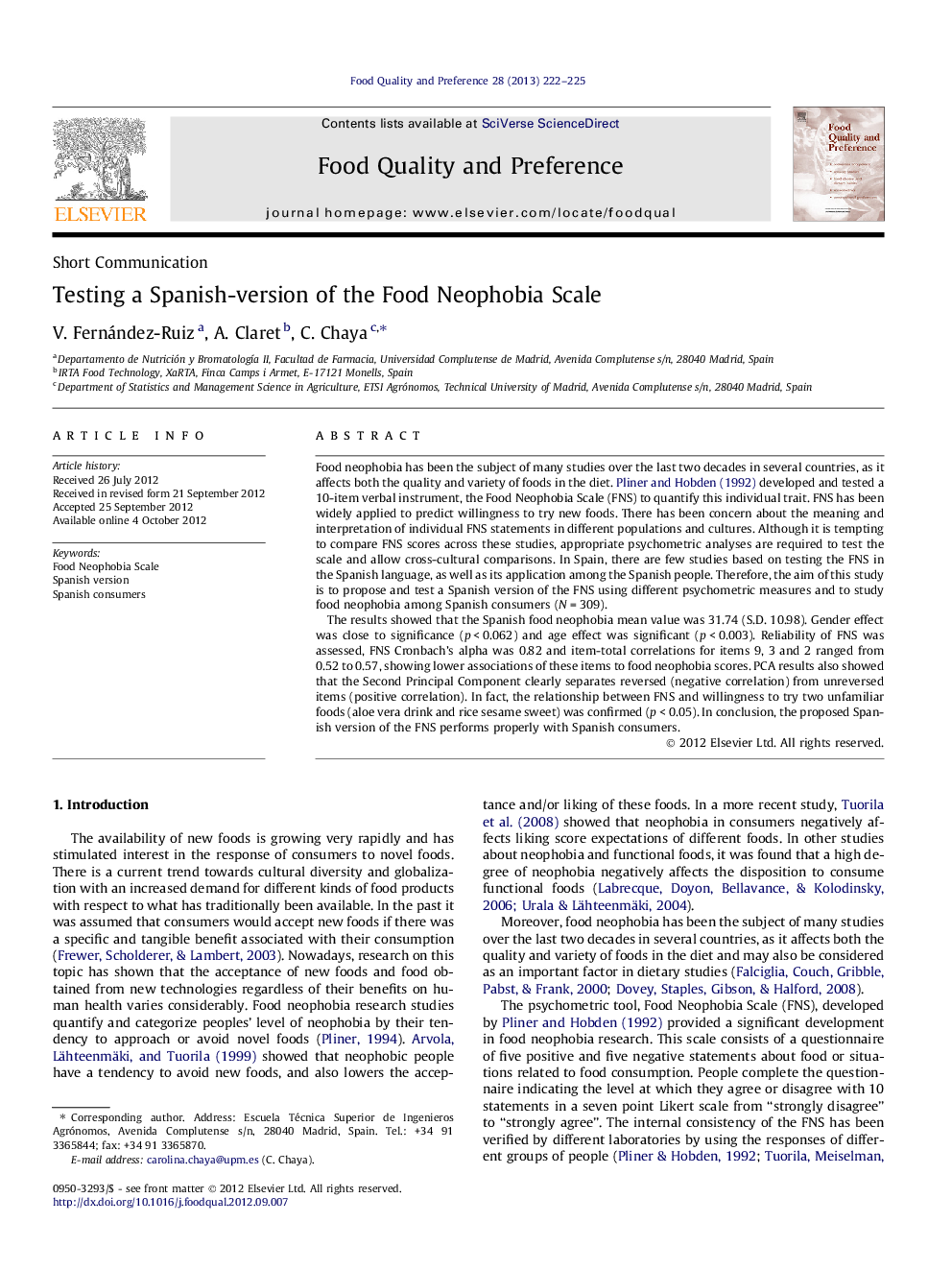| Article ID | Journal | Published Year | Pages | File Type |
|---|---|---|---|---|
| 4317373 | Food Quality and Preference | 2013 | 4 Pages |
Food neophobia has been the subject of many studies over the last two decades in several countries, as it affects both the quality and variety of foods in the diet. Pliner and Hobden (1992) developed and tested a 10-item verbal instrument, the Food Neophobia Scale (FNS) to quantify this individual trait. FNS has been widely applied to predict willingness to try new foods. There has been concern about the meaning and interpretation of individual FNS statements in different populations and cultures. Although it is tempting to compare FNS scores across these studies, appropriate psychometric analyses are required to test the scale and allow cross-cultural comparisons. In Spain, there are few studies based on testing the FNS in the Spanish language, as well as its application among the Spanish people. Therefore, the aim of this study is to propose and test a Spanish version of the FNS using different psychometric measures and to study food neophobia among Spanish consumers (N = 309).The results showed that the Spanish food neophobia mean value was 31.74 (S.D. 10.98). Gender effect was close to significance (p < 0.062) and age effect was significant (p < 0.003). Reliability of FNS was assessed, FNS Cronbach’s alpha was 0.82 and item-total correlations for items 9, 3 and 2 ranged from 0.52 to 0.57, showing lower associations of these items to food neophobia scores. PCA results also showed that the Second Principal Component clearly separates reversed (negative correlation) from unreversed items (positive correlation). In fact, the relationship between FNS and willingness to try two unfamiliar foods (aloe vera drink and rice sesame sweet) was confirmed (p < 0.05). In conclusion, the proposed Spanish version of the FNS performs properly with Spanish consumers.
► The proposed Spanish-version of the FNS performs properly with Spanish consumers. ► Results on Food Neophobia of Spanish consumers are presented. ► It could be useful in countries where Spanish is used as the first language.
